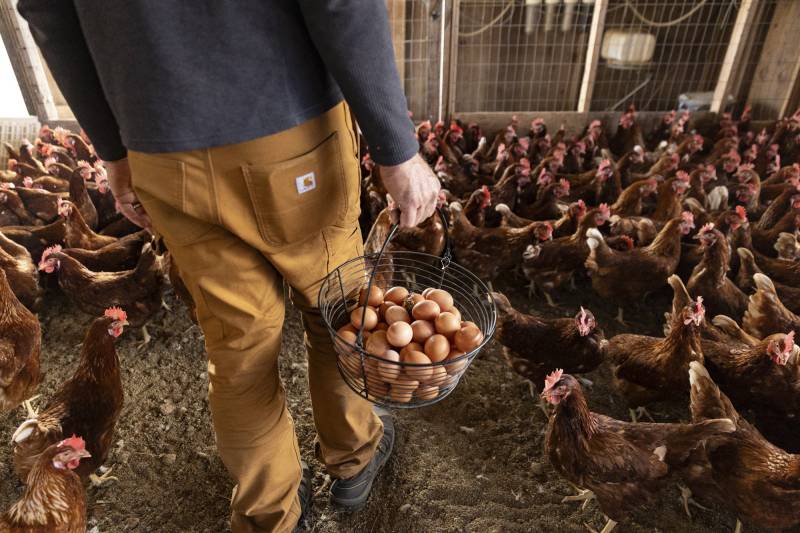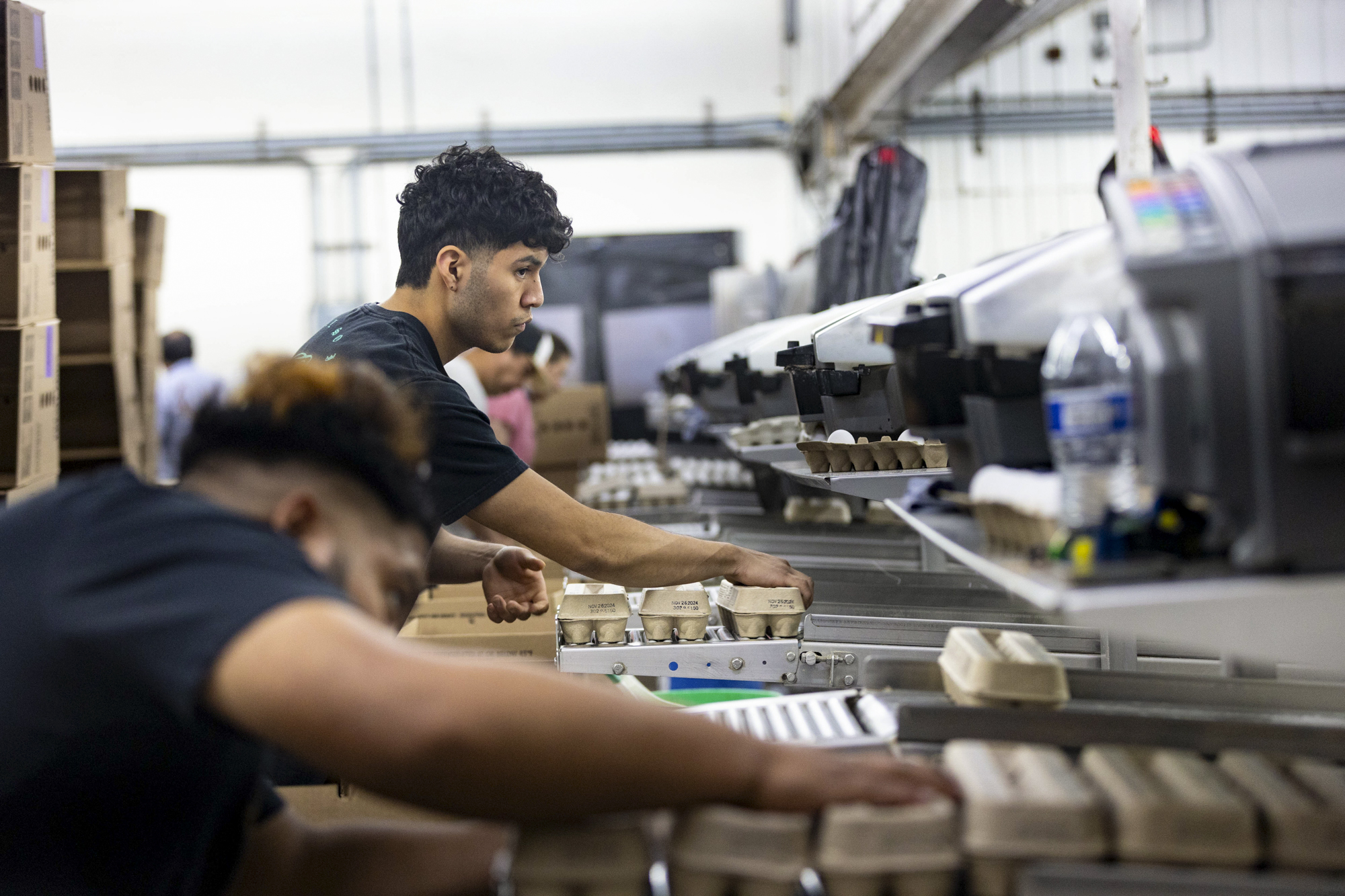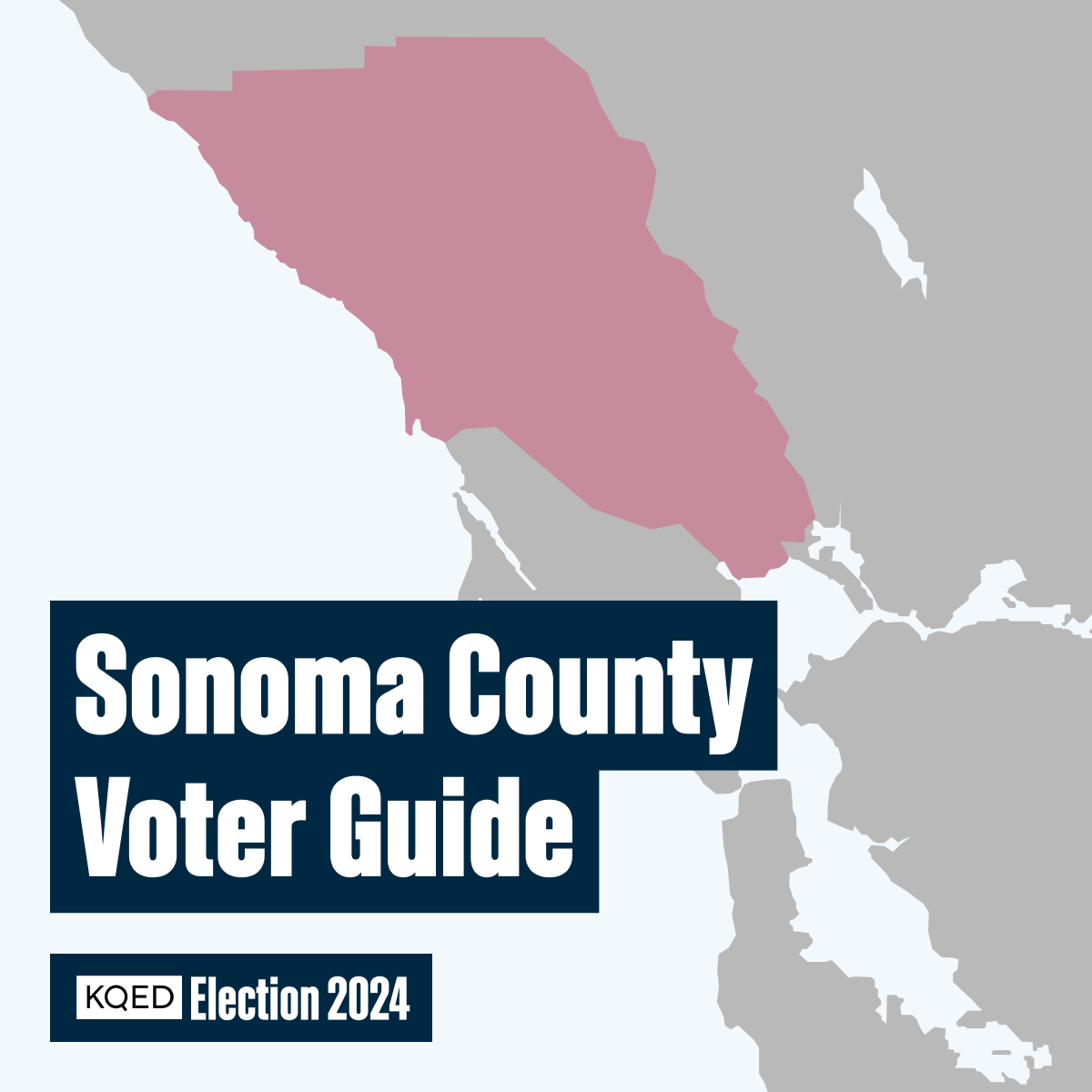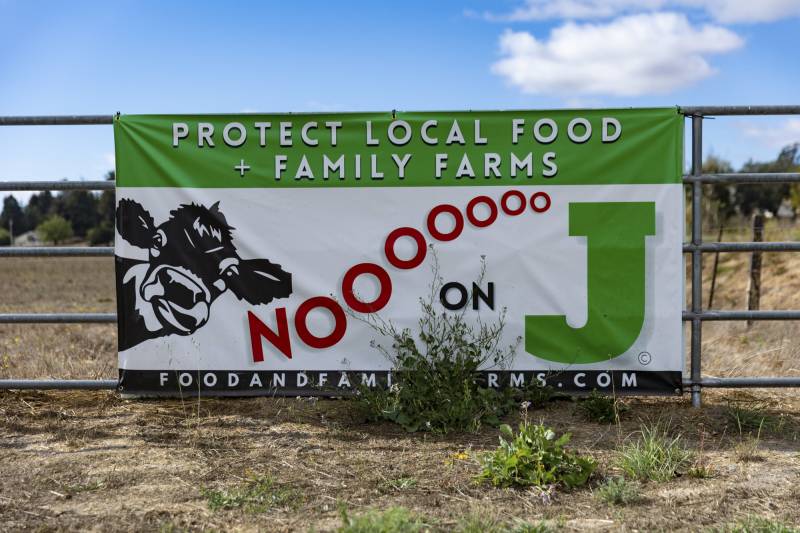More than 300,000 hens live on Weber Family Farms in Petaluma. Some are certified organic, meaning they eat organic food and roam cage-free through an old, wooden hen house, clucking in the fresh air. The rest are conventional hens and inhabit a dimly lit warehouse where they lay eggs once a day, which ultimately end up in supermarkets around the Bay Area and in southern California.
The farm has been in the Weber family for four generations. Mike Weber is the current co-owner, and while his farm is humane-certified — meaning a third-party animal welfare expert has visited and given their stamp of approval — he’s facing closure if Sonoma County voters approve Measure J.
“This is designed to put agricultural interests like ours out of business,” Weber said about the measure, which asks voters to ban certain large farms in the county in this November election.

Measure J borrows the federal definition of a large concentrated animal feeding operation or CAFO. Under the Clean Water Act, the Environmental Protection Agency defines a large CAFO (PDF) by the number of animals it has — 700 or more cows, 82,000 or more laying hens, for example.
“It’s not based on how well you manage your flocks, how well you take care of your animals and the level of animal welfare you have,” Weber said. “It’s all about a number. And if you exceed that number, you’re punished, and you’re shut down.”



